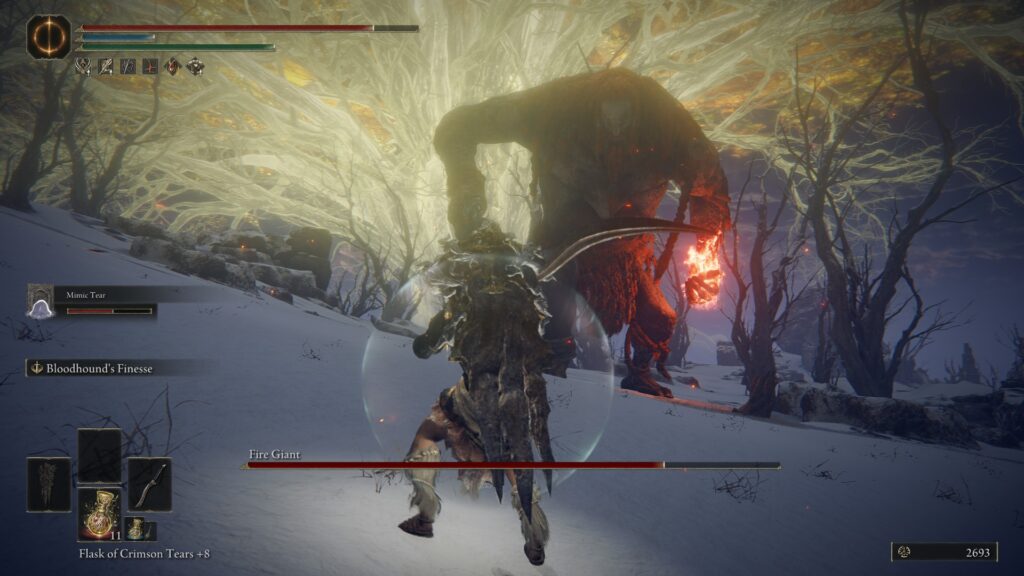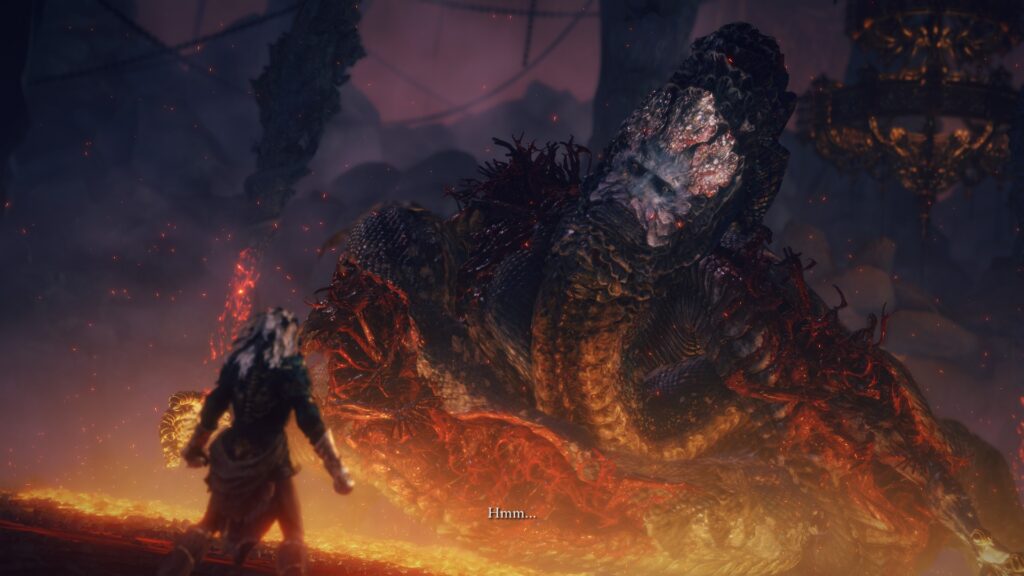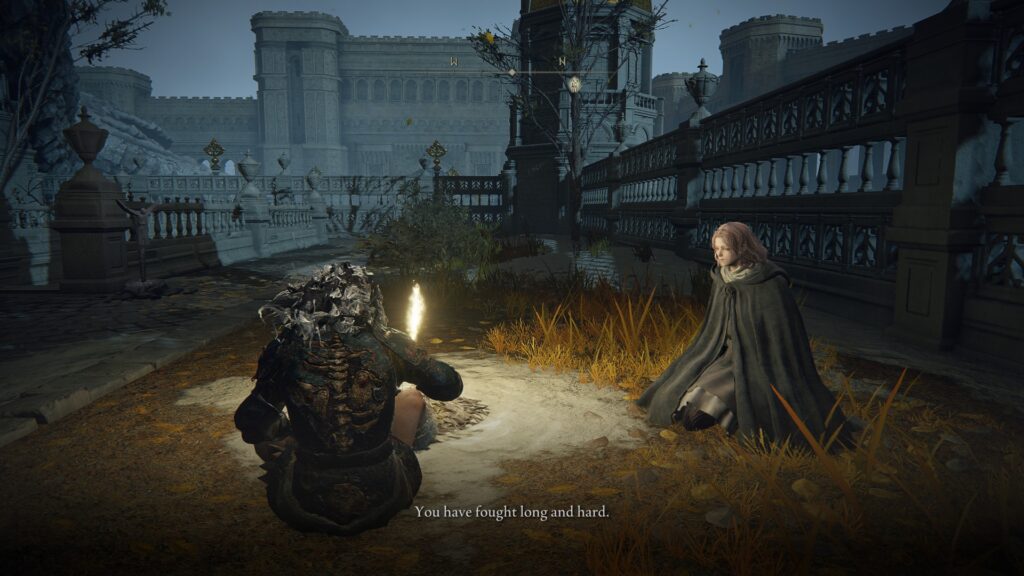I’m about three-quarters through my play of Elden Ring and I keep feeling like I’m circling the drain in terms of my interest in the game. I already talked about in my review how I felt that the game’s focus on open-world exploration clashed with the intricate nature of the previous soulslikes. But the one area that continues to annoy me is the combat, and I want to talk about how I feel Elden Ring betrays the combat design that elevated From Software in the past.
Choosy Choices
Elden Ring’s biggest improvement for a lot of people is the vast number of choices that the game presents. Out of all the previous soulslikes, this game boasts the greatest number of ways, builds, items, spells, etc. that someone can use to play.
In a way, this is the complete opposite style of balance and gameplay that we saw with Sekiro — in that the game was designed around the use of riposting and countering enemies. If you tried to play Sekiro in any manner other than the one the designers intended, you were simply not going to win, period.
As I said in my review, previous games were built primarily around melee combat, with ranged and magic builds either tuned to make the game easier or simply as gimmick builds that had to be played a specific way. Here, all the new ways and options for playing have been put on center stage, with melee combat now the worse option and I’ll come back to why in a minute.
The difficulty of Elden Ring is all across the board harder than any previous soulslike, but this is balanced, or intended to be balanced, by the number of options available. To that effect, Elden Ring can be a ridiculously easy game to play, but not in the way of previous games.
Cheesy Choices
When it comes to soulslikes, the reason why I like to play them is in the intricate balance and design of their combat. I don’t like to use items, spells, consumables, because I feel that they get in the way of the combat for me. In the previous games, all those options were completely optional and would provide a way of personally adjusting the difficulty if you need it. In Elden Ring, however, it becomes more and more apparent as you play the game that those options that were once optional are now factored into the balance of the enemy encounters and design.

Strange as it sounds, this is one of the normal-looking fights.
Every enemy and encounter used to be balanced solely on the melee combat, now they’re balanced on the player having access to everything, which means that if you don’t use everything, you’re in trouble. And before anyone links videos, I’m not counting master-level play of people soloing bosses at SL 1. I spoke about the general speed and AI of the enemies in my review, but to recap: enemy designs in Elden Ring feature longer combos, more chaotic patterns, and are harder to knock out of their attacks unless you use the new guard counter or jump attack.
As I entered the back half of the game, I would routinely face enemies that I would hit, they would be unfazed by the attack, they would continue their attack animation and even if I could dodge out of the way, could still track me in mid-combo to kill me. I’ve also noticed quite a bit of cases where an enemy would hit, and the recovery animation was so long that the enemy could start another attack and I couldn’t respond no matter what. Some of these patterns feel like something out of Nioh in terms of speed and ferocity, but I’m still constrained to the speed of playing Dark Souls. There are far more examples of input reading in Elden Ring when fighting NPCs and bosses. Many of the overpowered melee builds are about using weapons that specifically cause ailments like bleed and frost, with weapons that don’t have those effects just not worth it in the long run. Many of the weapons in Elden Ring just don’t have the viability or utility needed to get you through the entire game.
Given time and enough resources, you can accumulate a variety of strategies and equipment that will allow you to handle any fight very easily, but that kind of playstyle doesn’t interest me.
RPG Rumblings
The focus on open-world exploration and the variety of ways to play it make Elden Ring more in line with the CRPG or western RPG design. Unfortunately for me, I just do not like CRPG design. I have not enjoyed any of the Elder Scrolls or Fallouts, didn’t like The Witcher, and especially didn’t like any of the RPGs built off of Dungeons and Dragons rulesets.
I’m not a fan of games that feature multiple generalized ways of playing that you must use, and I prefer titles that are built on exploring the depth of a system like Slay the Spire, Etrian Odyssey, Library of Ruina, and many more. It’s also why I prefer action games that are about mastering specific gameplay styles and taking them as far as you can go. Fans of mine also know that I absolutely, without a doubt, hate games built on crafting consumables, and I think I hate it more than durability systems. This is why for me, Bloodborne is still my favorite of the soulslikes, and how it’s the complete opposite of Elden Ring.

the back half is full of interesting fights, and those that push the combat system to its limit
The key aspect of Bloodborne was making a streamlined soulslike, you had to focus on melee and dodging. There were far fewer weapons, but they were more distinct in how they played. The emphasis on dodging also came with your character being the most reactive and fastest with the exception of Sekiro. There was this idea that the humanoid enemies you fought were often equal to you in terms of abilities and movement.
Here, the balance has been skewed in favor of the additional elements and downplaying the actual combat system. Instead of being rewarded for focusing on melee and learning combat, the later enemy fights explicitly punish you if you want to try and use those builds. As I said, previous games in the series were balanced specifically on melee combat, with the other options as ways of lowering the difficulty if you want. Here, the game’s baseline is tuned around people using arts, items, spells, summons, and not so much actual fighting. Case in point, the number of group and duo boss encounters that unless you’re using a specific build, you must have summons in order to fight them. Any art that has a long windup time is just asking enemies to smack you during the charge-up. Besides input reading, the enemy’s ability to track the player in mid-combo or with ranged attacks has been increased.
The open-world progression of Elden Ring also shifts the gameplay and pacing in a direction that is counterintuitive compared to previous games.
Open World Order less
The open world of Elden Ring provides you with more rewards and items than ever before, but it also is not the same progression-wise as other games. In open-world titles, progression can come in three ways:
- General leveling up your character to unlock new abilities or raise stats.
- Incremental or massive upgrades with finding new gear
- Completing tasks that provide unique unlocks or passive upgrades
As I said in my review, the number of runes that an enemy is worth is often not related to their overall threat level. Where I’m at in the game, leveling will take about 60k runes per level. I could spend 5 seconds fighting enemies in Caelid that give 1,000 runes a piece or spend about 20 seconds risking life and limb to make 3000 fighting the enemies in the area I’m at.
The limited nature of the leveling takes me to the issues I have with point #2. I feel that there are far too many options in Elden Ring that are just superseded by their better versions, and unless you know ahead of time what the stat requirements are, you’re not going to be able to use them for a long time. This has always been the issue with games that allow you to personally add stats to your character — you either min/max for optimized play, or you end up messing up your character. You do have the option to respec once you beat a certain boss, but that is just a band aid fix for the overall problem. One of the major hurdles for combat is building up enough vigor to reasonably be able to fight enemies without being one or two-shotted by them.
For point 3, this is, to me, the biggest issue with the focus on points of interest. The vast, vast, majority of places you can explore in the game will not give you anything of value for your build. The only real general reward you can earn is the talismans, but you will get far more talismans than you will get pouches to equip them. I like the concept of the wizard towers that unlock more spell slots, and I wish that there was a melee-build equivalent reward in the world. There are very specific rewards that will apply to everyone — such as getting the mining bells that will allow you to purchase upgrade materials, but again, they are only found in specific areas.

I found things up to Morgot to be enjoyable
Given the large nature of the world and open-ended design, I was hoping for more generalized rewards or the means of adding utility to the different builds. At this point, I have multiple swords, shields, armor pieces, and armaments of all varieties that mean literally nothing to me. Actual upgrades to my build are very few and far between. I also think given the number of weapons and the number of upgrade materials needed to really use them all, it’s time to move away from farming and finding them and go with a generalized upgrade system that applies to all gear based on your progress in the game.
It would be very easy for me to pick one of the many bleed-based weapons (like katanas) or my frost ax, and just go around breaking encounters with them or spamming pots to take enemies down from afar, but that doesn’t interest me to play the game this way.
Widely Narrow Design
I think it’s interesting how much Elden Ring is resonating with a larger audience this time. While the majority of people playing may not consciously realize how much more different the game is compared to previous soulslikes, they are enjoying it for the exact reason why I’m not. What could make or break things for me is the number of patches and updates From Software is doing to the game. By the time you’re reading this, maybe some of these issues will have been rebalanced.
The first half of Elden Ring I genuinely enjoyed as I was learning how things work, exploring the land, etc. But when those systems tighten up and I’m now in a position where progress has slowed down, there’s less to explore, I’m just not finding it worthwhile to keep playing outside of doing it on stream. The problem with Elden Ring for me compared to previous games is that the difficulty curve feels reversed. In prior games, learning the basics and fundamentals would get you far, and why those titles were notoriously harder at the start than at the end. Here, the threat levels of the enemies continue to go up along with their stats, and the melee combat system is just not doing enough by itself to compensate. This may be the first soulslike that I don’t have any intention of doing another playthrough with if I do manage to finish the game at all.
If you enjoyed this story, consider joining the Game-Wisdom Discord channel. It’s open to everyone.

